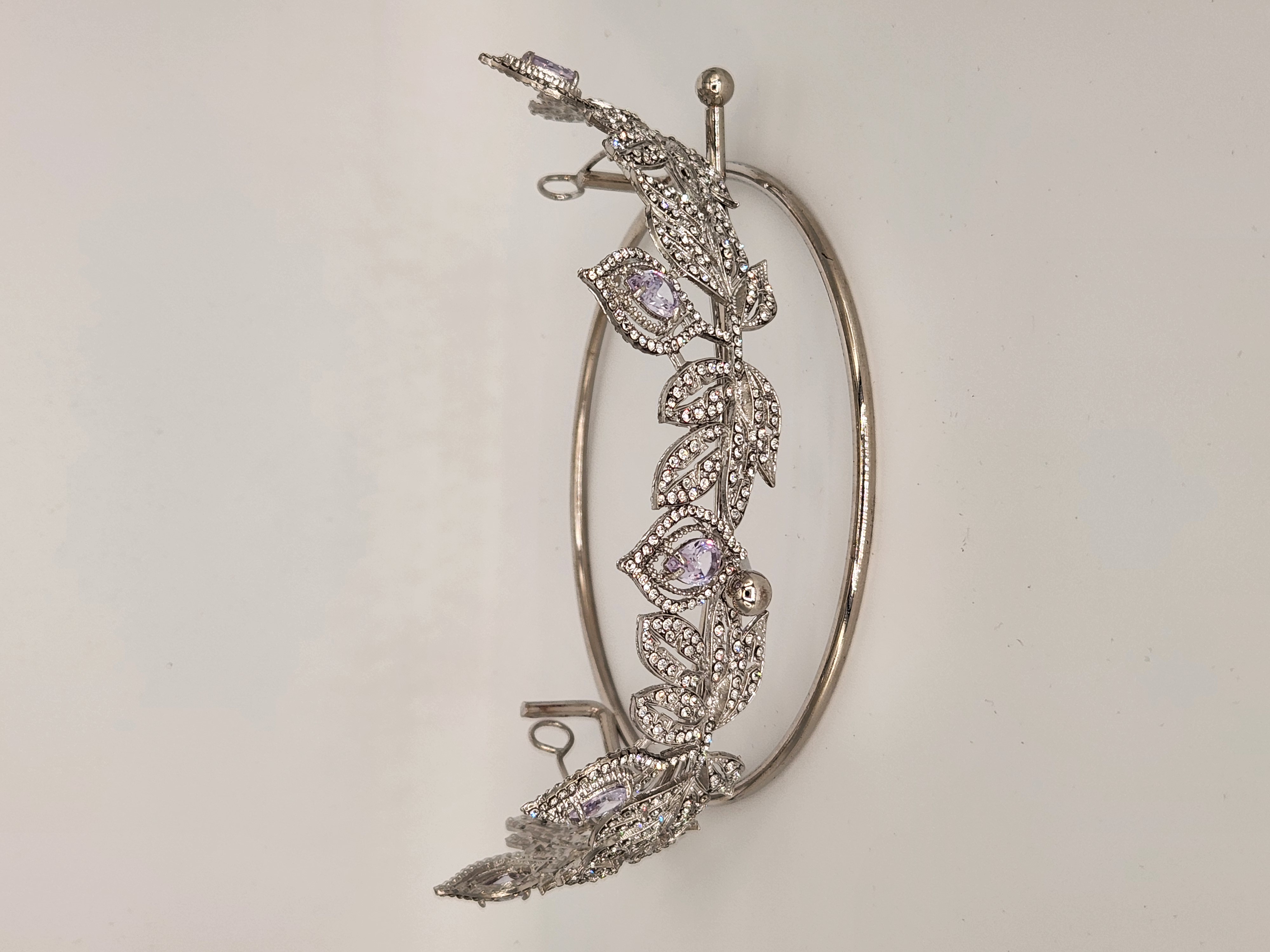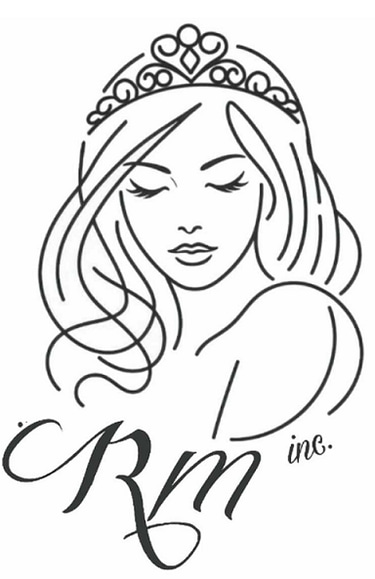
Delilah's Tiara
Sparkling silver headpiece with intricate leaf motifs
$45.00$35.00
Out of stock
Delilah’s Tiara — a luminous leaf-motif circlet that channels the quiet glamour of a woodland crown. Handcrafted to showcase delicate, overlapping leaf elements and studded with brilliant stones, Delilah’s balances organic detail with a refined, photogenic sparkle. At roughly 2.0 inches tall and 5.7 inches in diameter (≈ 5.08 cm × 14.48 cm) and weighing about 2.5 oz (≈ 70.87 g), it offers the visual impact of a statement tiara while remaining comfortable for a full day of celebration. The silver-tone finish complements cool-toned gowns and modern bridal styles — wear it with a soft chignon for classic elegance or with loose bohemian waves for a contemporary romantic look.
Why you’ll love it
Botanical elegance: leaf-inspired motifs create a refined, nature-forward silhouette that photographs beautifully.
Visible yet wearable: 2″ height gives presence in portraits without being heavy—ideal for ceremonies, photoshoots, and receptions.
Versatile styling: pairs with veils, up-dos, or loose hair for a range of bridal and formal looks.
Care & fit tips
Care (page not stated): gently wipe with a soft, dry cloth after each use; avoid direct contact with hairspray, perfumes, or pool/sea water to protect stones and finish.
Fit: secure with discreet bobby pins or hairpins at the base during dancing or outdoor events. (If you want to add reassurance for buyers, add the number of hair loops or a close-up image of the base to the product page.)
Query successful
Try again without apps
The Evergreen Crown: Tracing the History of the Elegant Leaf Tiara
The Delilah's Tiara, as it is named—with its sparkling silver frame and intricate, nature-inspired motifs, is more than just a beautiful accessory. It is a modern descendant of one of the oldest and most enduring symbols of power, victory, and natural beauty in human history.
The choice of the leaf motif for a headpiece ties this delicate design to powerful historical eras, ranging from classical antiquity to the glittering courts of 20th-century Europe. The style itself is a homage to the Naturalistic movement that peaked during the Belle Époque and Art Nouveau periods.
1. The Classical Roots: Crowns of Laurel and Olive
The leaf motif did not begin with jewels, but with nature itself. The original tiara was the humble, yet symbolic, wreath.
Ancient Greece & Rome (c. 700 BC – 476 AD): The direct ancestor of the leaf tiara is the classical diadem or wreath. In ancient Greece, the laurel wreath symbolized victory and honor, notably crowning winners at the Pythian Games and figures associated with the god Apollo. The olive wreath was the prize at the ancient Olympics. These wreaths were eventually translated into everlasting gold bands, making the leaf the original aristocratic head ornament.
2. The Neoclassical Revival: The Imperial Wreath
After centuries, the tiara was dramatically revived, and it was the leaf motif that cemented its return to high fashion.
The Neoclassical/Empire Era (Early 19th Century): The resurgence of classical art during the reign of Emperor Napoleon I and Empress Joséphine brought the leaf design back in spectacular form. For his coronation in 1804, Napoleon chose a gold laurel-leaf crown, intentionally recalling the Roman emperors. Joséphine and the ladies of the court popularized matching suites of jewelry, or parures, featuring garlands of laurel, myrtle, and wheat, rendered in glittering diamonds and gold. This era solidified the tiara as an essential piece of jewelry for noblewomen at court.
3. The Pinnacle of Foliage: The Belle Époque and Art Nouveau
The historical style that most closely influences modern, delicate, leaf-design pieces like the "Delilah's Tiara" is the transition from the late Victorian era to the early 20th century.
Belle Époque (1890–1914) / Edwardian Era: This era saw the height of the Garland Style in jewelry. The naturalistic designs of leaves, flowers, ribbons, and garlands were perfected through the revolutionary use of platinum. Platinum's strength allowed jewelers to set masses of diamonds in nearly invisible settings, creating an airy, light, and delicate effect that resembled frosted foliage and lace. The "sparkling silver headpiece" with its intricate, shimmering leaves is a direct stylistic echo of these graceful, diamond-set Edwardian garlands.
Art Nouveau (c. 1890–1910): Running concurrently, the Art Nouveau movement deeply valued the whiplash curve and organic, flowing lines of nature. Jewelers like René Lalique elevated the leaf and vine motif by using unconventional materials like horn, enamel, and moonstones to capture the subtle colors and movement of a living plant, emphasizing artistic expression over material value.
The Elegant Leaf Design Tiara is a contemporary nod to this rich history. By using sparkling stones and intricate metalwork to evoke the beauty of nature's delicate foliage, it embodies the symbolic heritage of ancient victory wreaths while capturing the feminine, ethereal grace of the Belle Époque's most cherished garland jewelry.
